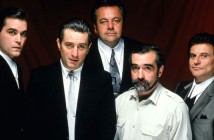
Editor’s Note: Maze Runner: The Scorch Trials opened in wide theatrical release September 18, 2015. For more on the film, read Maze Runner: The Scorch Trials: Leagues Ahead of the Derivative Pack.
Here we are, at the release of Maze Runner: The Scorch Trials, the latest in streamlined sequels to adaptations of dystopian young adult novels. The first film was quite a success, not only raking in cash, but entertaining many of those cynical toward the sub-genre with its mystery-focused plot, highlighting confusion as an opposition as opposed to a “big, bad, villainous organization.” This time around, the tables have turned. Its primary antagonist has become a big, bad, villainous organization, and its plot pertains solely to escaping, running from, and overcoming them (emphasis on running). The challenge this installment now faces is transcending the tropes and shortcomings its helplessly episodic structure can’t escape, by any means necessary. And while that’s an inherently difficult task, director Wes Ball has managed to pull it off.
While Maze Runner: The Scorch Trials doesn’t do anything philosophically stellar, it’s very clearly dedicated to itself.

As sequels do, this one picks up right where the previous film left off, with Thomas and his band of sweaty teenagers in a helicopter, on their way to someplace supposedly better. That place is a facility, run by a man named Janson (Aiden Gillen of Game of Thrones), which houses many other teenagers, equally as sweaty as Thomas and his friends. Things go awry, and our leads (plus a few new additions) hatch a plan to get out, escaping into the vast, degraded wasteland outside known as The Scorch. There, they must brave the harsh environment, fight zombie-derivatives called Cranks, and find anybody who can potentially help them survive. Simple? Sure. Derivative? Definitely. Entertaining? Absolutely.
In both Maze Runner films, Dylan O’Brien performs very theatrically, setting himself far above the leads in other young adult films.
While Maze Runner: The Scorch Trials doesn’t do anything philosophically stellar, it’s very clearly dedicated to itself. Maybe its story does hit manipulative beats, maybe it is predictable, maybe it does set up a sequel as obviously as the first film did, but it doesn’t mask a single one of those facts. Not for one second does it pretend it’s better than other franchises, it just pours its heart and soul into making every scene in it as intense, despairing, and hopeful as can be, whether successfully or not. Wes Ball’s talented direction assists this, with a massive sense of scale that brings standard chase scenes to thrilling heights, and standard shootouts to similar altitudes. The action is gritty but not dimly so, and practically overflowing with urgency. Chase scenes can be filmed shakily, but their important moments are clearly shot, giving them a realistically chaotic nature.
In both Maze Runner films, Dylan O’Brien performs very theatrically, setting himself far above the leads in other young adult films. He allows everything to feel earned, from emotional arcs to sudden action setpieces. Hell, even exposition feels engaging, and exposition’s usually the downfall of films like these. His supporting cast is less charismatic, but all are still individually endearing in their own ways. While inside of the facility the film opens in, they all show this off, displaying fear in addition to relief, and putting them in the gorgeously decrepit environment of The Scorch makes watching their adventure an even better experience.
All it takes is proper devotion to make blockbusters worth their runtimes, and Maze Runner: The Scorch Trials is a 131 minute-long, rewardingly exhausting trek through grandiose and unbridled popcorn fun.
All it takes is proper devotion to make blockbusters worth their runtimes, and Maze Runner: The Scorch Trials is a 131 minute-long, rewardingly exhausting trek through grandiose and unbridled popcorn fun.



